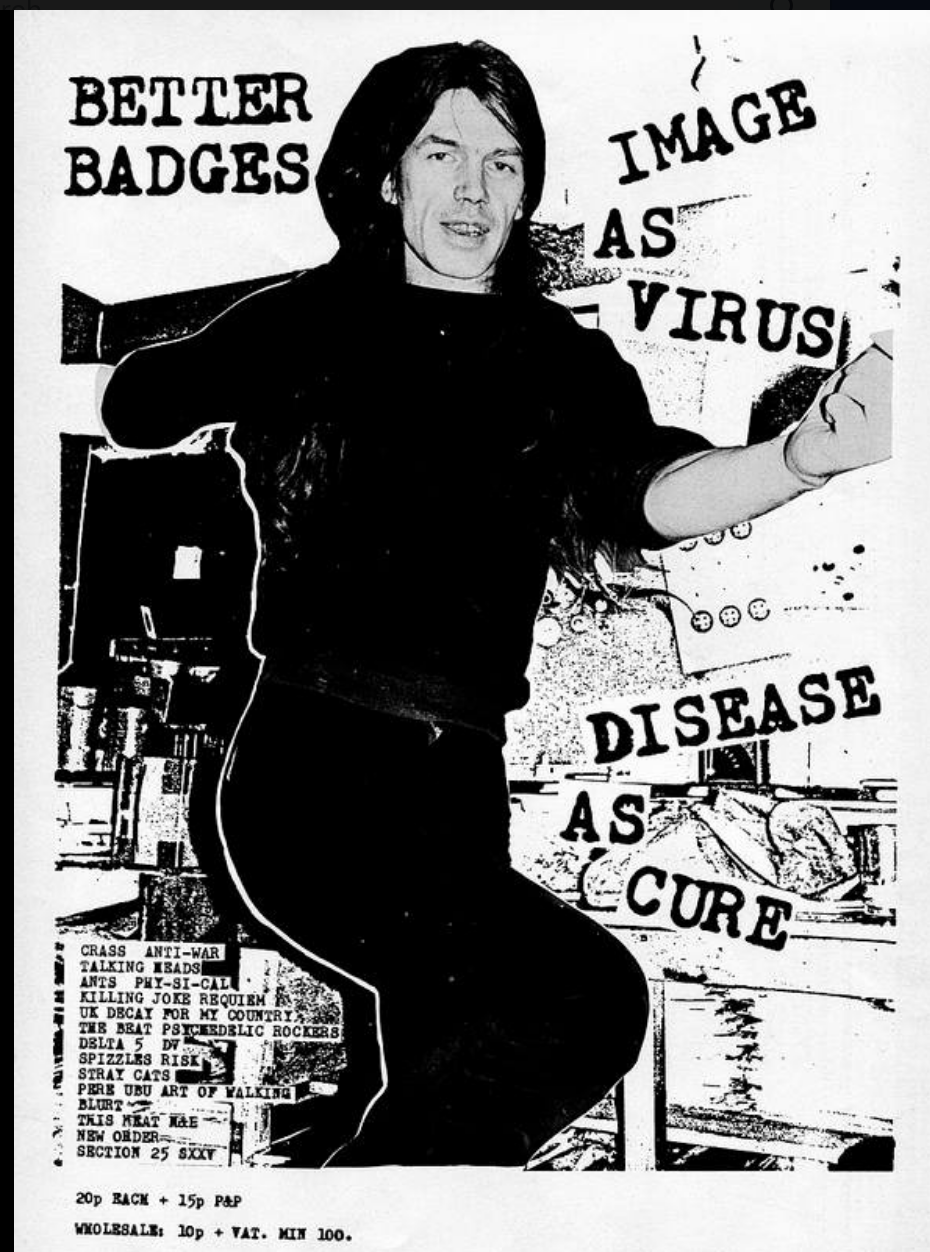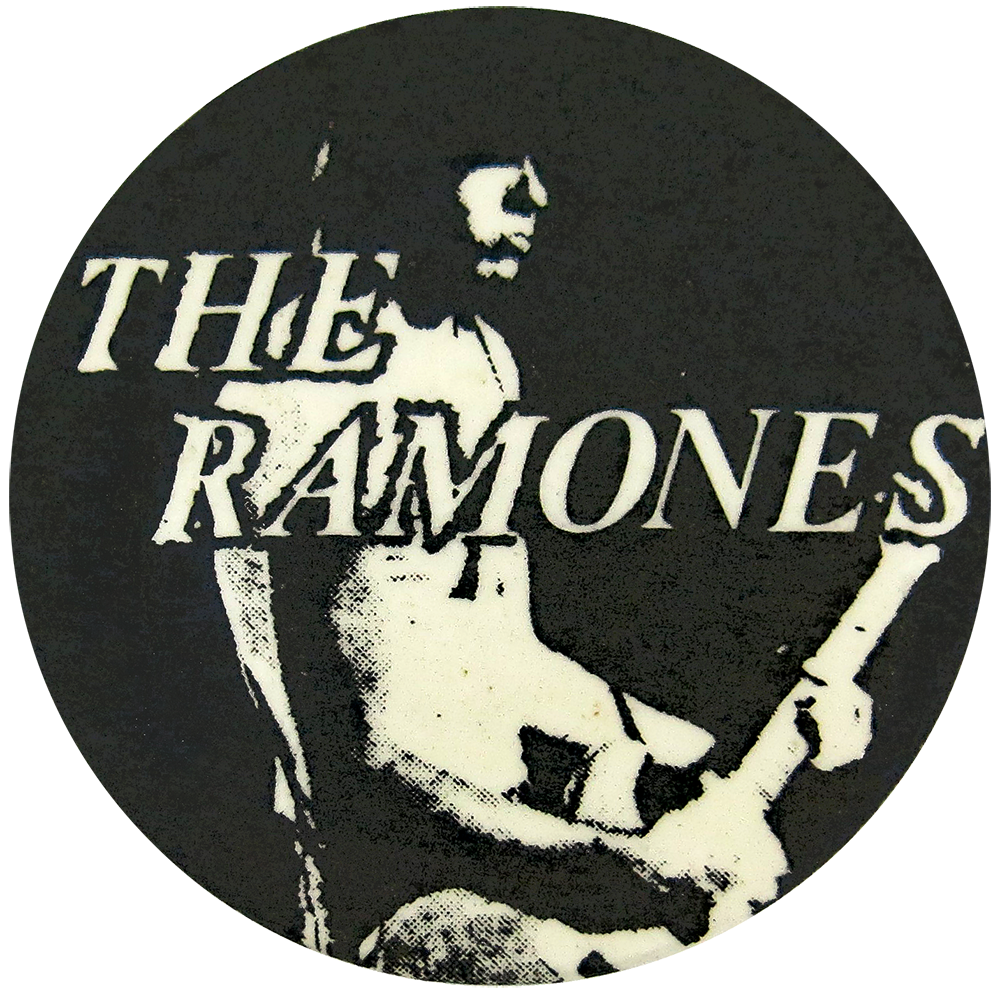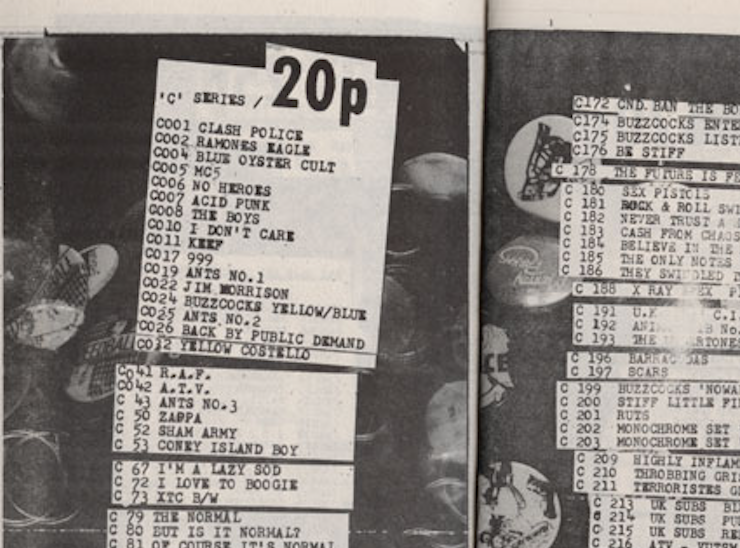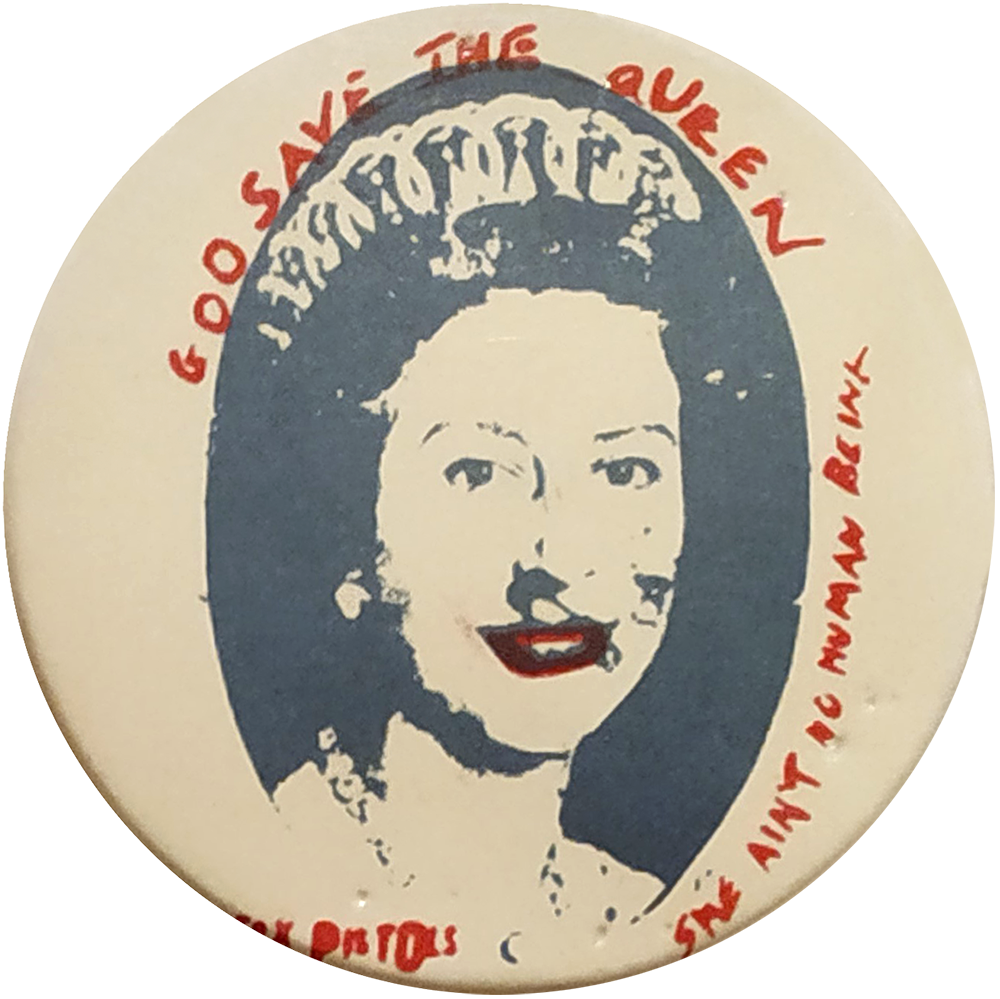Between 1977 and the early 1980s, Better Badges became the leading merchandiser and exporter of millions of punk badges from their headquarters at 286 Portobello Road in London.

A former 60s DJ, Joly MacFie became a roadie for UK underground heroes the Pink Fairies. After an original 1967 Jimi Hendrix ‘I’m Experienced’ button was stolen from him, MacFie became interested in the medium, and established the Better Badges in London in 1976. Fruitfully this coincided with the first stirrings of the punk rock movement, where his badges fit well into its egalitarian DIY ethic. Using cheap ‘Instaprint’ and xerox, he utilized graphics extensively and coined a founding principle, “Image as virus, elitism for all,” suggesting that music fans could use badges to support whomever they liked “without being gouged by merchandisers” or left to the mercy of promotional giveaways.

Starting from the famously seminal July 4 1976 Ramones and Flamin’ Groovies show, the Better Badges badge stall established itself at premier punk venues The Roundhouse and, later, the Electric Ballroom and The Lyceum. Catering to the audiences at these shows very much drove design development. Mail order became popular, and a weekly top ten was published in music paper the NME.

Production began in a garage in St. Stephen’s Mews, and expanded to the Portobello Road premises in 1978. MacFie used progressive printshop Letterstream, which was home to the first public color Xerox machine in London, before setting up in house printing. The extra printing capacity was turned to fanzines, and also some other materials for new indie labels such as Rough Trade, Mute Records, and Y Records. A ‘Tape Department’ was set up that duplicated cassettes. By 1980 Better Badges staff had risen to 15, including three full time designers, and three printing press operators.
Around the same time, MacFie purchased an A.M. radio transmitter for the broadcasting of music, mainly reggae, from the top floor office of 286, to the printers in the basement. This would eventually lead to the formation of the Dread Broadcasting Corporation – the first major urban London pirate radio station.

Better Badges contributed significantly to the rapid growth of the independent UK record business.’ Some designs were original, derived from the scene, or fans, but many were ordered by groups themselves. Many groups that later became famous, such as Joy Division, and U2, first official output were Better Badges. The ‘elitism for all’ ethic meant that all designs were available to the public. Early on, MacFie attempted to establish an official system of paying designers and bands royalties for badge creations. When this system proved to be “patchy” and difficult to manage, compensation evolved into MacFie aiding musicians on an ad hoc basis. Eventually, after a summit with Rob Gretton of Factory Records, who were having decide whether the badges they ordered became ‘official’ numbered Factory product, MacFie concluded that his badges were a ‘bottom-up’ medium. He established a renewed system of awarding 200 free badges to the band and samples provided to the designer anytime a new design was accepted for use. This proved to be a more official and effective arrangement, and a similar deal was available for fanzines.

MacFie’s groundbreaking DIY culture company thrived in making buttons a vital element of 1970s punk culture. His ideal was that badges were always affordable and integral to dictating true trends in music since any fan could buy one to show support and likewise, musicians could have more of a hand in how they were promoted to their fans and “could now turn themselves into cultural transmitters.” Additionally, MacFie realized that it was influence – not fame – that drove fan support and that it was better to be considered “cool” than perceived as “hot” when it came to mainstream recognition – specifically when MacFie witnessed situations such as when punk underground “cult heroes” Adam and the Ants officially became chart toppers overnight. MacFie states that “punks dropped them like a stone” and sales of their buttons almost immediately ceased.
After creating around 40 million badges and 10, 000 fanzines, as well as having the foresight that the future of music fandom would eventually be online, MacFie stepped away in 1982, to pursue BBS activity in California. He passed the business along to a staff cooperative, who kept it up for a few more years. Eventually the business was sold and stopped publishing badges, becoming strictly a production house.
In 1986 MacFie went back into the button business in NYC, setting ‘Pinstand’ at The Ritz in NYC, selling Better Badges and new designa, but unlike his former expansion, always kept this a strictly one man operation at shows. In 1996 his ‘WWWhatsup Online Pinstand’ was the first online purveyor of buttons, or, indeed, anything punk.
Sources:
“Image as Virus: Better Badges in the Punk Era,” 80WSE, 2021. Accessed from https://research.steinhardt.nyu.edu/80wse/projectspace/2016/12/imageasv…
“Moving the needle: the punk badges that defined the 1970s music scene,” The Guardian, December 14, 2016. Accessed from https://www.theguardian.com/culture/gallery/2016/dec/14/punk-pins-badge…
“When Owning 10,000 Punk Badges Isn’t Enough,” Noisey: Music By Vice, November 30, 2016. Accessed from https://www.vice.com/en/article/vdbjqj/image-as-virus-celebrates-the-hi…
MacFie, Joly. 2014. "Better Badges: Image as Virus." In "Fandom and/as Labor," edited by Mel Stanfill and Megan Condis, special issue, Transformative Works and Cultures, no. 15. https://doi.org/10.3983/twc.2014.0521.
